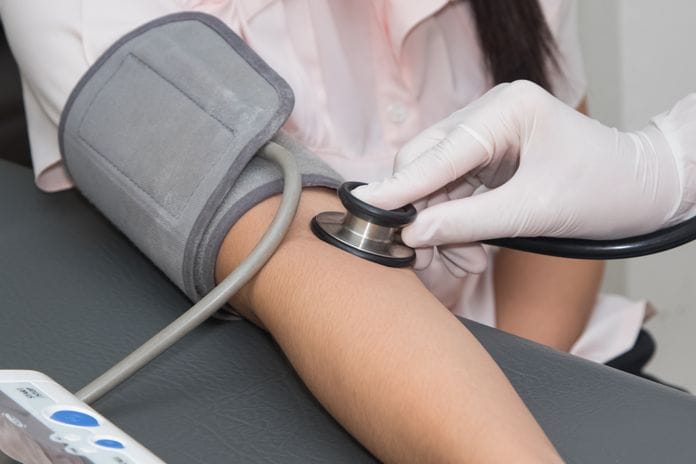Let me ask you a question: how many of you take blood pressure readings on your patients before beginning treatment? For those of you who take blood pressure readings on your patients, bravo to you! You have my respect; you may now skip the rest of this article, pass Go, and collect $200. But for those of you who now find yourselves blushing in embarrassment, as I once did when posed this question, I urge you to continue reading.
A majority of hygienists that I have asked this question admit that they do not take blood pressure readings on their patients.
Until quite recently, I had not used a blood pressure cuff since graduating hygiene school four years ago. As dental hygienists, we are taught from the beginning that we should take our patient’s blood pressures before beginning treatment. We are healthcare providers after all, so why are so many of us neglecting to do it? Why are we ignoring blood pressure readings as a key component of the comprehensive health history review that we should perform at each appointment?
I would wager my favorite scaler that time is a big factor here. If there is one thing you learn in hygiene school, one single thing that becomes a part of your dental hygienist core, it is this: manage your time efficiently. And we do…well, we try to anyway. Many of us find ourselves working in a profession in which we are being asked to do more with less time to do it. It is a sad, but apparently common trend in dentistry these days.
In the days of dentistry past, it was standard to have a 60-minute working window for hygiene recare visit. A simple search on any hygiene forum or blog will reveal that treatment times are being shortened across the country. Many hygienists report that they only have 45 minutes, sometimes a mere 30 minutes, to treat patients regardless of the need for radiographs, periodontal condition, etc. What in the world are we supposed to do with such little time granted to us? Scale every other tooth? Perpetually delay the FMX? Skip full-mouth periodontal charting? I certainly hope not! Hygienists are notably detail-oriented by nature, and we try to give our patients the very best care possible. So, we save time wherever we can, and more often than not, this means that the patient’s blood pressure is not measured. This, my fellow dentites, is an egregious error on our part.
As you probably know, the American Academy of Cardiologists, the American Heart Association, and nine other health groups just changed the defining parameters of high blood pressure1. Hypertension was formally diagnosed at a systolic reading of 140 and a diastolic reading of 90. Now, a systolic reading of 130 and a diastolic reading of 80 warrants a hypertension diagnosis. This change in qualifier now means that 46 percent of Americans have high blood pressure, which is 14 percent more than defined by the old limits1. All hygienists know that there is a direct link between periodontal health and heart health. Considering this new standard, the oversight in the routine of our practice must not continue.
Several months ago, I started a full-time position in a progressive office. One of the first things my new employer asked me to incorporate into my routine, as her recently acquired (and only) hygienist, was to take blood pressure readings on each hygiene patient. I immediately and enthusiastically complied. Each patient I’ve treated over the last four months has had their blood pressure taken prior to beginning treatment.
My routine is as follows: I take blood pressure once with a wrist cuff, and if it falls in a hypertensive range I take it twice more with an arm cuff. If the reading remains above 130/80, I proceed with treatment, present my findings to the dentist, and we strongly advise the patient to consult with their primary care physician. If the blood pressure approaches 180/110, however, I immediately dismiss the patient and advise that they return with clearance for treatment from their PCP or a cardiologist. And you know what? I’ve dismissed at least ten patients over the last four months alone. Several patients we have dismissed have gone to the ER of their own volition just because the numbers we recorded concerned them enough. One patient returned to thank us the following day because we helped diagnose an underlying condition that he was unaware was affecting his health.
I cannot say that I am terribly shocked; an astounding number of patients see their dentist more regularly than they see their physician. High blood pressure is stress on the body that can exacerbate a wide variety of health conditions, including many that could become life-threatening to our patients. Not unlike gingivitis or periodontal disease, many patients are completely unaware that they have hypertension until it is diagnosed.
As hygienists, we are the first line of defense when it comes to finding oral conditions and diseases. It is our duty as clinicians and patient advocates to alert the dentists to our findings so that we can best educate the patient and guide them towards appropriate treatment. We have neglected to realize the disservice we do our patients by neglecting to measure their blood pressure in our chairs.
Once upon a time, each of us swore an oath vowing to deliver a full measure of competent care to the public that trusts us to do so. If we are ever to bridge the gap between medicine and dentistry, we must educate our patients on our concerns for their heart health. We must campaign for a higher standard of care than we have been delivering. I urge each of you to try to take the time to start checking your patients’ blood pressure. I promise you will be amazed by what you find.
Before you leave, check out the Today’s RDH self-study CE courses. All courses are peer-reviewed and non-sponsored to focus solely on high-quality education. Click here now.
Listen to the Today’s RDH Dental Hygiene Podcast Below:
References
- Bernstein, Lenny, and Ariana Eunjung Cha. Blood pressure of 130 is the new ‘high,’ according to first update of guidelines in 14 years. 13 Nov. 2017, www.washingtonpost.com/news/to-your-health/wp/2017/11/13/blood-pressure-of-130-is-the-new-high-according-to-first-update-of-guidelines-in-14-years/?utm_term=.f1c5f337e4c5. Accessed 29 Nov. 2017.












